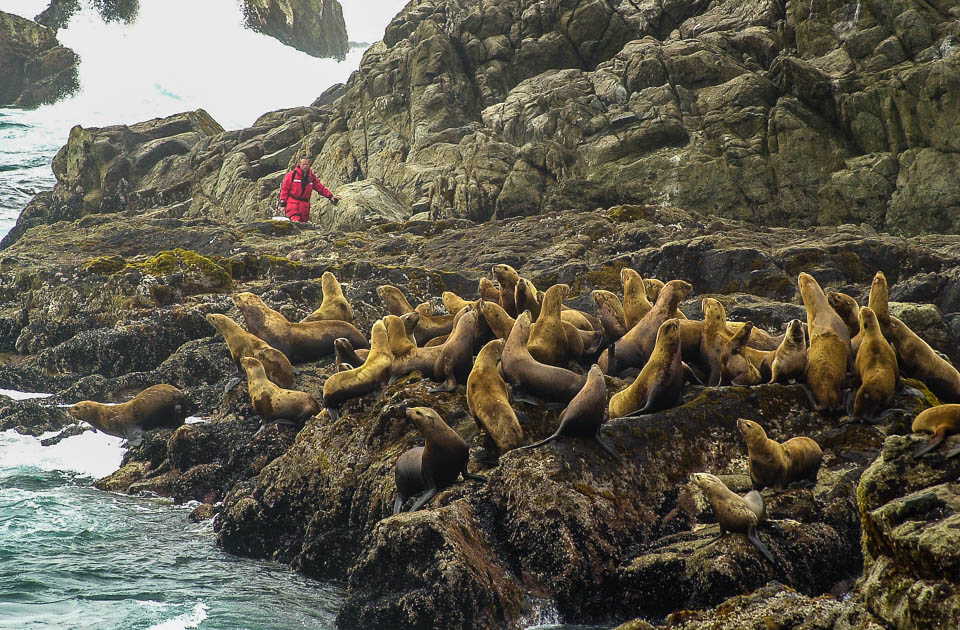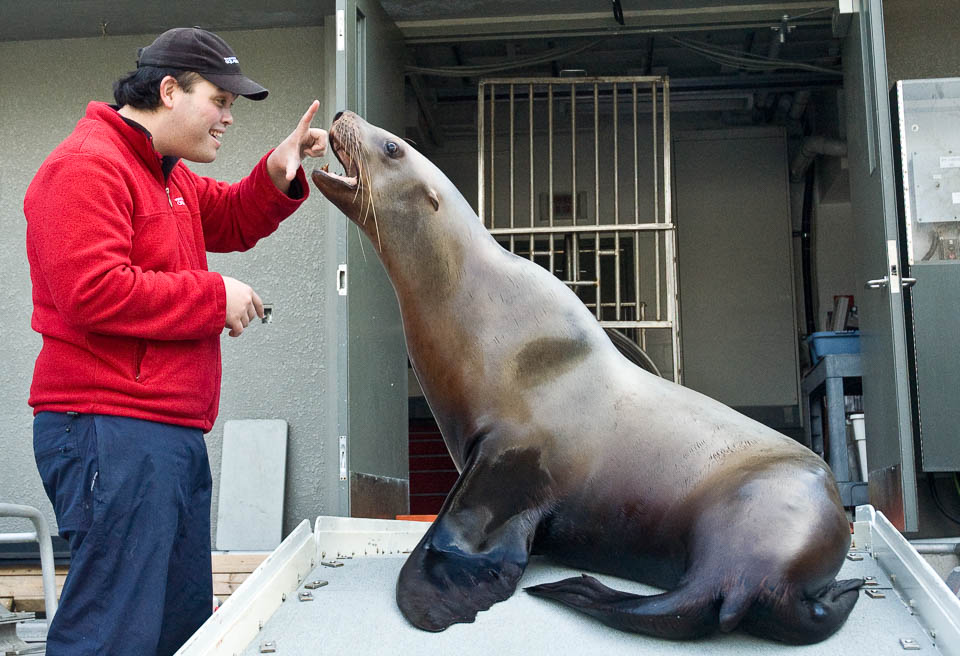The scoop on poop and stress levels in Steller sea lions
There is a fundamental problem with the traditional methods of determining the health of wild marine mammals. The very act of acquiring data―such as obtaining blood samples―can alter the same physiological indicators that you are trying to measure. One solution that is becoming increasingly popular with wildlife biologists is “remote sampling”, where data are obtained by methods that cause minimal disturbance to the individual animal. Examples of such novel techniques include using photography to determine body condition (a trend made more common with the use of drones) and collecting the exhalations from whale blows.

Determining whether sea lions are nutritionally stressed could be as simple as collecting their feces and measuring the concentrations of hormones they shed.
Another means of assessing animal health is by measuring the concentrations of hormones in blood samples. However, measuring hormones such as glucocorticoid hormones that are associated with stress would likely be elevated in the blood of captured animals due simply to having captured and handled them to draw a sample of their blood. Thyroid hormones are another important source of information that may help pinpoint the source (and consequences) of any apparent rise in stress hormones.
One solution to obtaining unbiased measurements of hormone concentrations of wild animals is to measure them in scats rather than blood. Using scats that can be collected without disturbing animals sounds like an ideal solution―and is being widely used around the world on different species. However, the technique needs validation for each species in question to allow measured concentration levels to be properly interpreted.

Captive feeding trials with unstressed sea lions are essential to validating the fecal hormone technique.
A pilot project conducted by Dr. David Rosen (UBC) is trying to understand the strengths and weaknesses of this technique using the Consortium’s captive Steller sea lions. As part of their long-term research program, the sea lions consumed different diets, and occasionally experienced periods of insufficient nutrition and lost body mass. Coincidentally, Dr. Rosen’s team also collected extra scat and blood samples during these trials. A grant from the North Pacific Research Board allowed these samples to be analysed by Dr. Samuel Wasser—a world leader in this field and a professor at the University of Washington.
Initial results from the pilot project look promising. Large changes in stress hormones in blood appear to track with levels found in the feces. The results also suggest that certain thyroid hormones (T4) respond to changes in nutritional status. While additional validation work needs to be conducted on a larger set of samples, the use of fecal hormone levels shows promise as a tool to help understand the reasons for population changes in Alaska’s Steller sea lion populations.
Dr David Rosen is a Research Associate in the UBC Marine Mammal Research Unit.
This article originally appeared in The Marine Mammal Research Consortium’s newsletter for March 2016
